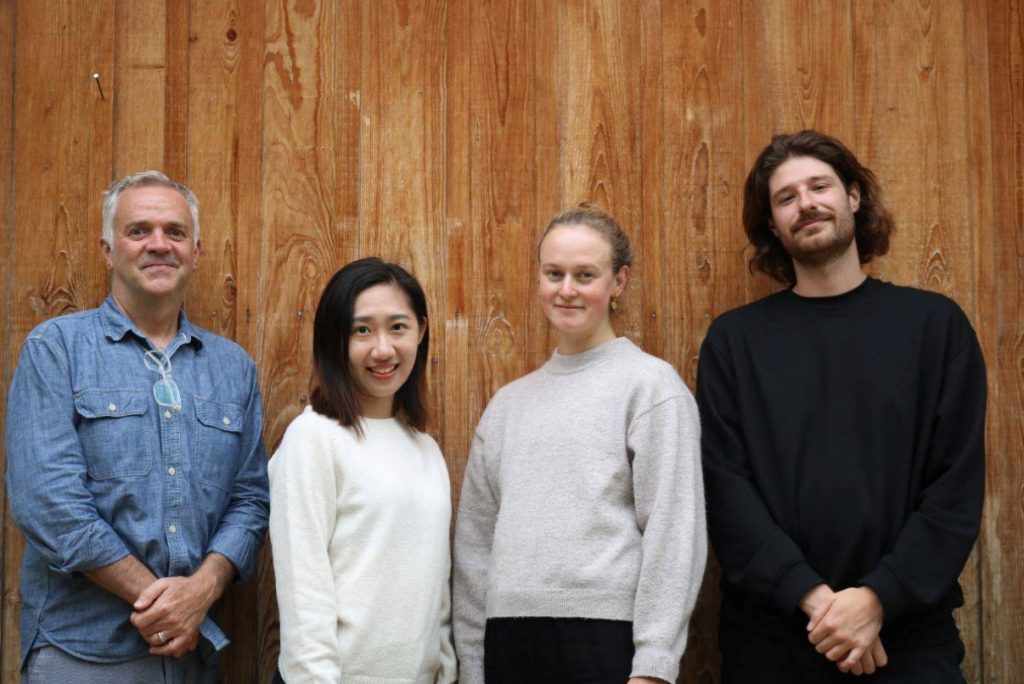Reflections: Talking Sustainability at the University of Groningen

We are three doctoral researchers from the University of Bern (Switzerland) working on a team project titled in short as Articulating Rubbish. Thanks to our supervisor Prof. Crispin Thurlow as well as the vast network of people behind RESPONSUS and ENLIGHT, we were invited to spend two instructive days at the University of Groningen. After a long night traveling across Germany, our train comfortably took us to the lively student city in the Northern Netherlands.
Our two-day stay started at the House of Connections, where RESPONSUS organized a public-facing event titled “Sustainability Reimagined”. Upon arrival, we were immediately struck by the innovative design of the venue. The programme was structured around lectures and workshops that explore the role of (visual) language in offering sustainable solutions to tackle pressing societal issues. In the opening lecture, comic artist Tjeerd Royaards introduced the important role of humor in communicating climate change and environmental destruction through cartoons. We learned that the visual rhetoric of a burning earth turns out to be rather effective strategy for highlighting the urgency of climate action. The keynotes presented by Professor Arran Stibbe (on multimodal ecolinguistics) and Professor Crispin Thurlow (on a sociolinguistics of waste) were no less insightful for getting at the role of language in shaping our understanding of sustainability, a term which — despite its omnipresence — can sometimes remain vague and indefinite. We were particularly inspired by Léonie de Jonge’s talk on how Far Right politicians successfully use insects in their campaigning in seemingly harmless but populist ways.
In between lectures, we also had the chance to attend three workshops. To start off, Dr. Erika Darics’ analytic exercise dissected the linguistic strategies that business organizations employ to shift the blame of the current climate crisis onto individuals. In parallel with this session was Dr. Janina Wildfeuer’s workshop, centered on a social semiotic analysis of stock images depicting climate action. Finally, we joined Dr. Femke Kramer in ‘rewilding’ language by exploring more novel, creative ways of thinking and writing about nature (as well as our interrelations with it). Ultimately, these hands-on workshops offered the opportunity to (re)discover the transformative potential of (visual) language in more concrete ways.
At the end of the day, we learned that sustainability is not only about reducing individual consumption; more so, it is about decoding the metaphors that threaten democracy, discovering new stories to live by, and critically questioning the disenchantment stories that unvaryingly frame human culture as separate from nature. In this light, then, sustainability is essentially about exposing the ideologies that individualize responsibility, while unveiling structural roots of the problem that are oftentimes obscured.
However, it is not only the academic input that’s worth mentioning. In the evening, we were invited to join a rather lovely ENLIGHT networking dinner at EETWAAR — a great place for connecting with other scholars and researchers from all over Europe. There’s not much to say besides that we will always remember Groningen for its fascinating foodie scene. This prepared us nicely for the IdeaLab scheduled for the next day.
During this meeting, representatives from the various ENLIGHT universities came together to talk about the role of critical language awareness for more sustainable futures and how this can be applied in practice — what we believe to be a very productive discussion. This was followed by a sustainable tour of Groningen in the afternoon. This tour provided insight into where to buy locally grown food, as well as measures the municipality has implemented to become “greener”. To sum up our brief adventure in the Netherlands, we returned home with a more critical and reflexive understanding of language and communication in (re)shaping how people make sense of the world and perhaps more crucially, how they relate to one another and to the environment. On a final note, we would like to thank the lovely organizers who made all of this possible!

